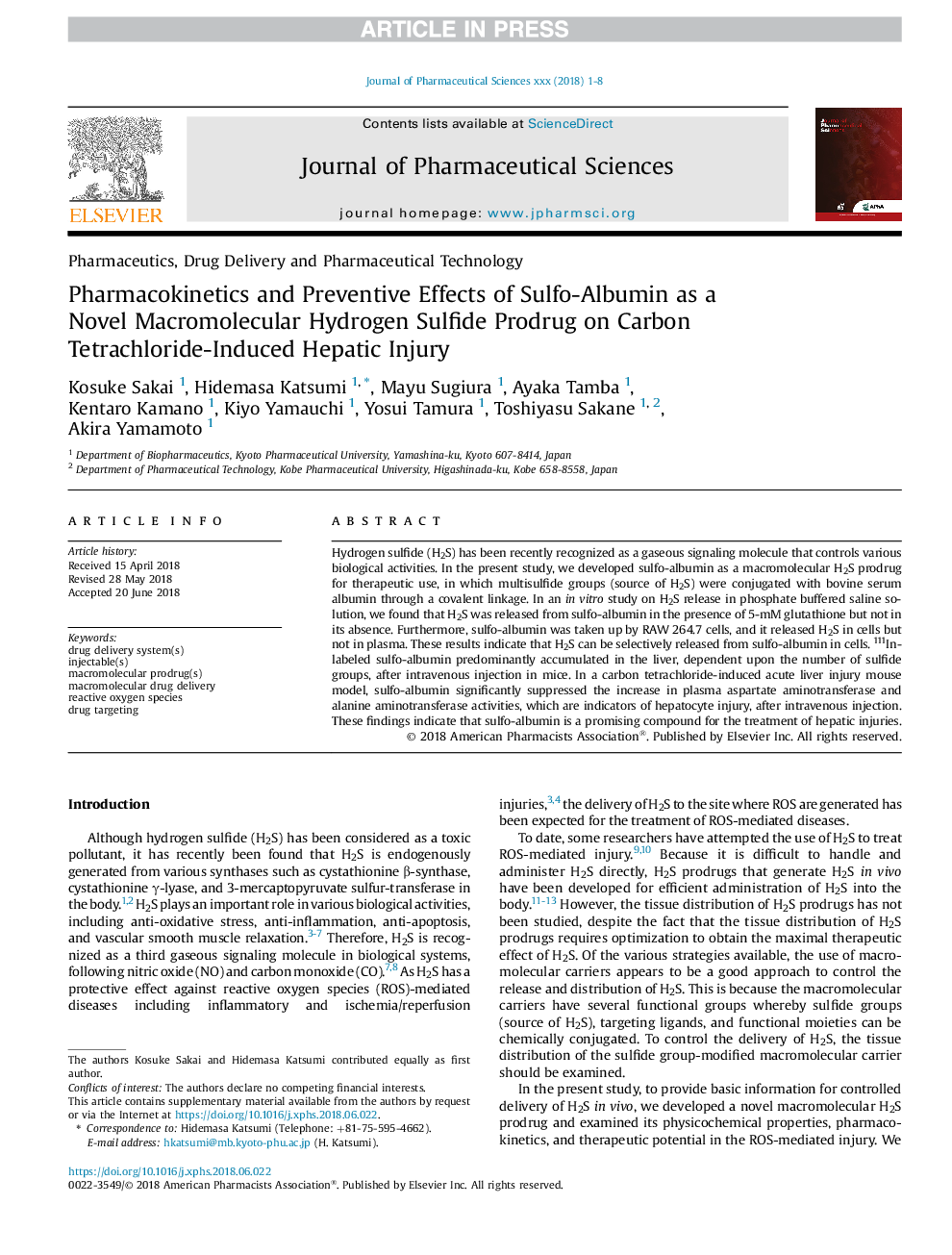| Article ID | Journal | Published Year | Pages | File Type |
|---|---|---|---|---|
| 10158204 | Journal of Pharmaceutical Sciences | 2018 | 8 Pages |
Abstract
Hydrogen sulfide (H2S) has been recently recognized as a gaseous signaling molecule that controls various biological activities. In the present study, we developed sulfo-albumin as a macromolecular H2S prodrug for therapeutic use, in which multisulfide groups (source of H2S) were conjugated with bovine serum albumin through a covalent linkage. In an in vitro study on H2S release in phosphate buffered saline solution, we found that H2S was released from sulfo-albumin in the presence of 5-mM glutathione but not in its absence. Furthermore, sulfo-albumin was taken up by RAW 264.7 cells, and it released H2S in cells but not in plasma. These results indicate that H2S can be selectively released from sulfo-albumin in cells. 111In-labeled sulfo-albumin predominantly accumulated in the liver, dependent upon the number of sulfide groups, after intravenous injection in mice. In a carbon tetrachloride-induced acute liver injury mouse model, sulfo-albumin significantly suppressed the increase in plasma aspartate aminotransferase and alanine aminotransferase activities, which are indicators of hepatocyte injury, after intravenous injection. These findings indicate that sulfo-albumin is a promising compound for the treatment of hepatic injuries.
Related Topics
Health Sciences
Pharmacology, Toxicology and Pharmaceutical Science
Drug Discovery
Authors
Kosuke Sakai, Hidemasa Katsumi, Mayu Sugiura, Ayaka Tamba, Kentaro Kamano, Kiyo Yamauchi, Yosui Tamura, Toshiyasu Sakane, Akira Yamamoto,
